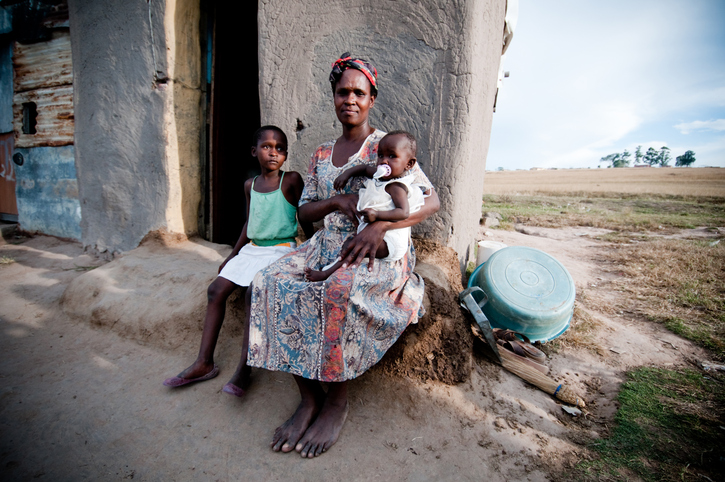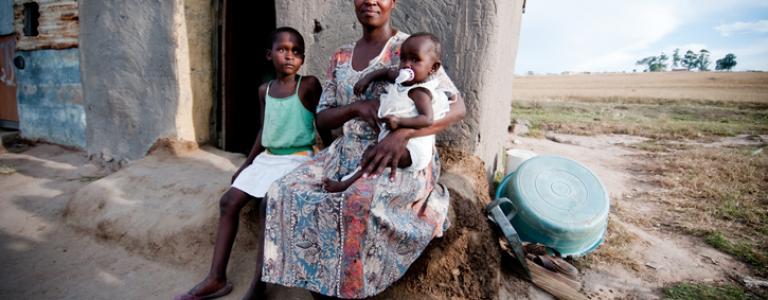Healthy Lives and Well-being for Everyone: Why SDG 3 matters and how we can achieve it
Creating a sustainable world—and reaching economic, environmental and social goals—depends on having a thriving and healthy human population. We explore how Sustainable Development Goal 3 plans to achieve that.
Creating a sustainable world—and reaching economic, environmental and social goals—depends on having a thriving and healthy human population.
However, even the most cursory glance at figures pertaining to human health reveals a world where grave inequalities result in massive disparities when it comes to access to basic health care, and where easily treatable diseases still claim far too many lives in many corners of the globe.
Let’s start at birth. In 2015, there were approximately 303,000 maternal deaths worldwide, most from preventable causes. Maternal health conditions were also the leading cause of death among girls aged 15-19 in that year.
Infant mortality rates—along with many other health-related issues—can also expose inequalities within nations. In Canada, for example, while the average mortality rate is around 5 deaths per 1,000 live births, it reaches as high as 16 deaths per 1,000 live births in Nunavut—a region where 85 per cent of the population is Indigenous.

Around the world, more than 6 million children still die before their fifth birthday each year, with four out of five of those deaths occurring in sub-Saharan Africa and Southern Asia. Rates of poverty and the level of the mother’s education are key factors that affect the likelihood of a child making it past the age of five.
When it comes to communicable diseases, at the end of 2013, there were an estimated 35 million people living with HIV worldwide. In fact, 240,000 children were newly infected with the disease that year.
While the rates of malaria are falling globally, the recent resurgence of ailments such as measles and the Zika virus reminds us that there are always potential health crises around the corner for which we may not be equipped—with the Global South often most at risk.
A Global Approach to Worldwide Problems
When world leaders adopted the Sustainable Development Goals, they signed on to a goal (SDG 3) that aims to "ensure healthy lives and promote well-being for all at all ages."
The Millennium Development Goals (MDGs), which provided a global framework for development from 2000-2015, and dedicated a hefty 3 out of 10 goals to global health issues (child mortality; maternal health; HIV/AIDS, malaria and other diseases).
The targets under SDG 3 have an even greater scope than those three MDGs combined. Furthermore, given the integrated nature of the sustainable development approach, many of the other SDGs, such as Goal 1 (“end poverty”), Goal 2 (“end hunger”) and Goal 6 (“ensure access to water”), are strongly tied to—and have an impact on—human health issues.
The recent resurgence of ailments such as measles and the Zika virus reminds us that there are always potential health crises around the corner for which we may not be equipped—with the Global South often most at risk.
Many of the SDG 3 targets are dedicated to tackling pressing issues surrounding maternal health and child mortality rates, which continue to affect much of the Global South in particular. The ambition of those targets reflects the urgency of the work at hand, and the desire of the international community to continue their work on the unfinished business in the MDGs. By 2030, Target 3.2 aims to “end preventable deaths of newborns and children under 5 years of age,” and Target 3.1 is to “reduce the global maternal mortality ratio to less than 70 per 100,000 live births.”
Other targets reflect the universal nature of the SDGs. They touch on everything from universal health coverage and tobacco control to reducing the number of deaths due to road traffic accidents and substance abuse—issues that are widespread in countries at all stages of development.
Both developed and developing countries have work to do to ensure healthy lives and promote well-being for all of their citizens, including addressing policies on universal access to health coverage and populations’ relationships with alcohol and narcotics.
Towards a Healthier Future
The global community has already made significant progress in key areas of human health. Despite the still-high figures of maternal mortality, the United Nations reports it has actually fallen by almost 50 percent since 1990. In Northern Africa and Southern and Eastern Asia, maternal mortality has also been reduced by around two-thirds.

17,000 fewer children die each day than in 1990—some of which can be attributed to increased access to vaccinations. For example, since 2000, the United Nations reports that measles vaccines have prevented almost 15.6 million deaths globally.
When it comes to treating HIV, at the end of 2014, 13.6 million had access to antiretroviral therapy, and new HIV infections in 2013 were estimated at 2.1 million—38 per cent lower than in 2001.
These achievements point to the value of international goals—the MDGs—in focusing global efforts on shared objectives. The SDGs continue, and widen the scope of actors and efforts, in order to ensure that no one is left behind due to lack of access to health care and healthy lifestyle options.
You might also be interested in
Toward a Coherent, Transformative Approach to Financing Sustainable Development, Climate, and Nature
Four key proposals for the Fourth Financing for Development Conference (FfD4) to create an integrated, equitable approach to financing climate, nature, and development goals.
Green Public Procurement in India
This report analyzes the status of green public procurement (GPP) in India and suggests key strategies for advancing sustainable procurement practices.
Budgeting for Net Zero
This study estimates the cost gap for battery energy storage systems (BESSs), offshore wind, solar photovoltaic (PV), electric vehicles (EVs), and green hydrogen (GH2) to inform government support.
Plastics Treaty Must Remain Ambitious — We Can’t Give Up Now
The last round of the plastics treaty negotiations in Busan, South Korea, did not result in a deal, but the momentum is palpable. We must seize this opportunity and keep working toward an ambitious treaty that addresses the entire plastics life cycle.
